
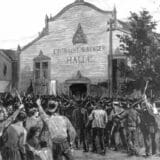
(This is the first in a three-part series about the misclassification of employees as independent contractors – a practice which affects millions of workers in the U.S., including most of the nation’s nearly 100,000 port truck drivers).
At the zenith of the Occupy movement, some commentators adopted the term “neo-feudalism” to describe the relationship between powerful corporations and the rest of society. Did this rhetoric have a basis? Yes and no. A portion of today’s workforce labors under conditions that resemble the dark era of the 19th century more than they do either the medieval or the modern one.
First, a little background. In the social and legal world of medieval England (which, for better or worse, begat our legal system), one’s employer was one’s master, landlord, and protector – and all these relationships were encased within the Church and the great chain of being.
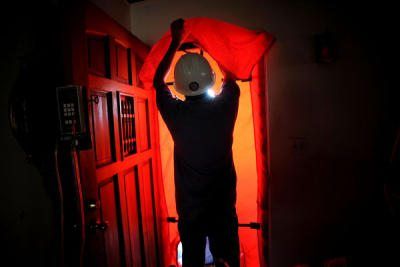
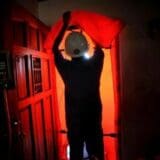
(In today’s Los Angeles Daily News, staff writer Dakota Smith reports on one of the city’s most promising initiatives — an energy efficiency program that is saving consumers money, creating jobs and reducing our energy use. The project, a partnership between the International Brotherhood of Electrical Workers Local 18 , the union representing the utility’s workers, and the Department of Water and Power, has received strong support from RePower LA, a broad-based coalition that promotes the economic and environmental benefits of energy efficiency.)
Lorraine Cannon stretches every dollar. The 84-year-old lives off a monthly retirement check from L.A County, and she shares her Pacoima house with her granddaughter and three young great-grandchildren.
But now helping to pay the bills is an unlikely source: the Los Angeles Department of Water and Power.
Cannon’s house was picked for an energy efficiency makeover by the department,


On a day when the number of unemployed Americans ticked up to 8.3 percent, it’s worth checking out an ongoing project of Marketplace. The American Public Radio program has been inviting readers to contribute images and comments they believe capture the essence of what it means to be middle class.
“We spend a lot of time talking about the middle class,” says Marketplace. “What it is, who’s part of it, why it matters. Now it’s time for you to tell us.”
The photos range from retro black-and-whites to current digital snaps, and the contributors run the gamut from retirees to students, from the complacent to Occupiers. The contributors’ comments are often more poignant than the images. One young Virginian submitted a grim watercolor of a man carrying a sign reading, “Out of Confidence.” As the contributor explained:
“I do not consider myself middle class at the moment.
» Read more about: WebHot: Marketplace’s Middle Class Photo Project »


Hundreds of millions of tons of goods enter the United States every year through our nation’s busiest ports in Long Beach and Los Angeles. Containers are then trucked through the Los Angeles basin to the Inland Empire, San Bernardino and Riverside counties, where roughly 85,000 warehouse workers, mostly Latino, unpack and reload items onto trucks destined for retail outlets.
The explosion of “domestic outsourcing,” the aggressive practice of contracting warehousing, transportation and goods delivery to a complex hierarchy of contractors and subcontractors, has lowered the quality of jobs in Southern California and disproportionately impacted working Latinos here, many of whom move goods for Walmart and other giant retailers at these subcontracted warehouses.
That’s why Warehouse Workers United [has] launched a new Web series: “Voices/Voces from the Warehouse,” which features real workers in Walmart-contracted warehouses recounting their personal experiences and stories from the warehouse where they work.
In the first episode,
» Read more about: Warehouse Workers' Stories Heard in New Web Series »


The L.A. Times story about fish Down Under getting skin cancer could’ve been a funny, though macabre, read if the subject weren’t so sad. After noting that 15 percent of coral trout in Australia’s Great Barrier Reef are believed to have cancerous lesions on their scales, writer Jon Bardin adds, “In that regard, they resemble Australians who live on land — two in three people who live down under will be diagnosed with skin cancer before the age of 70, the highest rate in the world.”
This is serious news, though, because the takeaway goes beyond the fact that Aussies won’t be throwing coral trout on the barbie any time soon. The fishes’ affliction apparently stems from their habitat, which lies under the outer fringes of the giant Antarctic ozone hole that’s been letting in ultraviolet rays since the invention of refrigerants. These UV rays are strongly suspected of causing the trout’s melanoma – as they are of causing it in humans.

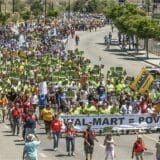
(The following post first appeared on Salon. Author Josh Eidelson discusses Girshriela Green, who was fired after speaking out against bad working conditions at Walmart during the massive June 30 march and rally held in L.A.’s Chinatown. The Los Angeles Alliance for a New Economy stands with OUR Walmart workers and actively encourages all members to call Walmart’s VP of Public Relations TODAY at 479-277-9350 to demand justice for Girshriela and her fellow workers and to reinstate her.)
As Wal-Mart celebrates its 50th anniversary this summer, it has faced a new wave of resistance from its “associates” — the company’s corporate-speak for employees. Last month, a delegation of Wal-Mart workers brought their grievances to the company’s shareholder meeting, including low wages and understaffing. In interviews yesterday, three workers at the forefront of the campaign told Salon the company has punished them for their activism. Critics say that the world’s largest private sector employer is playing dirty once again.
» Read more about: Walmart Retaliates Against Activist Workers »


 In 2005, Hewlett-Packard paid Carly Fiorina $40-million if she promised not to come to work anymore. The absurd payoff followed the company’s stock plunge during Fiorina’s six-year tenure as CEO. That $40-million could have gone to staff, shareholders or new hires.
In 2005, Hewlett-Packard paid Carly Fiorina $40-million if she promised not to come to work anymore. The absurd payoff followed the company’s stock plunge during Fiorina’s six-year tenure as CEO. That $40-million could have gone to staff, shareholders or new hires.
Since then, most Americans — for whom the phrase “retirement package” is a cruel joke — have watched their net worth collapse while CEO payouts have reached heights far beyond the reach of mortal men.
A study released earlier this year by GMI, a corporate-governance rating and research firm, found that the golden parachutes of just 21 CEOs collectively add up to nearly $4 billion. (That’s Carly’s massive kiss-off multiplied by 100.) You don’t want to know how rich every one of these guys — yes, they are all guys — was to begin with.
Former Penn State football coach Joe Paterno died in January after being fired for helping to cover up the systematic sexual abuse of kids under his watch.


In case you’ve missed it, the Cayman Islands have been in the news lately, and not just because it’s swimsuit season. Much of it has to do with a certain presidential candidate’s personal finances, and this, in turn, has provoked some journalistic spade work into the schematics of the “offshore economy.” In fact, just as American factories and jobs have increasingly emigrated to other countries, so have the piggy banks where some of our super-rich and/or presidential candidates place their money. Adam Davidson, of NPR’s Planet Money fame, ran a suitably scary piece in last Sunday’s New York Times Magazine in which he sketched how easy it is for just about anyone with a telephone and photo ID to set up an offshore account.
It’s a great read that begins with Davidson Googling the names of a few firms that are well versed in parking your earnings in tax-free,
» Read more about: WebHot: You Too Can Be an Offshore Tax Shirker »
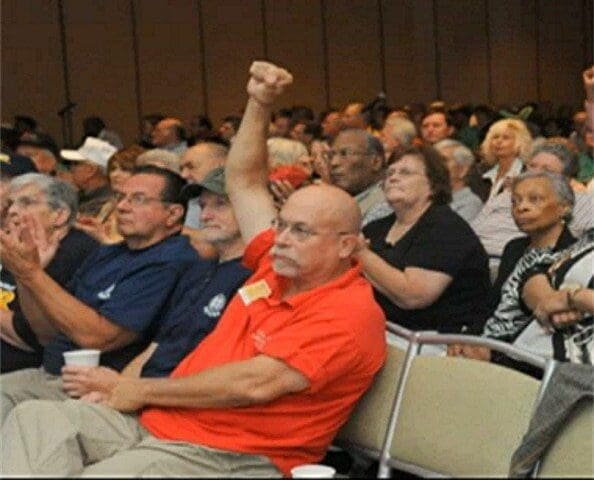
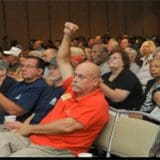
Social Security, Medicare and Medicaid are under attack by Republican lawmakers. Whether it is the Romney/Ryan budget that would end Medicare as we know it or proposals to privatize and cut Social Security, members of the Alliance for Retired Americans are pushing back and mobilizing with new “Let’s Not Be the Last Generation to Retire” campaign.
During the next few weeks to coincide with Medicare’s and Medicaid’s 47th anniversary July 30 and Social Security’s 77th on Aug. 14, Alliance members will sponsor educational briefings at senior centers and organize protests outside offices of lawmakers who have voted against the needs of local retirees. Says Alliance President Barbara Easterling:
Our goal is to educate seniors on the issues and on where elected officials and candidates stand. We need to clear up all the misinformation that is being spread by the big business groups and the right-wing commentators on TV.
» Read more about: Let’s Not Be the Last Generation to Retire »
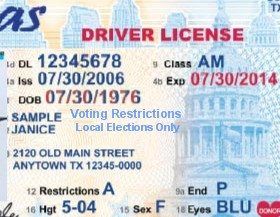
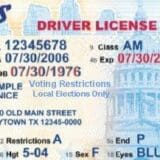
In the last two years, since the Republican sweep in the 2010 elections, GOP-controlled legislatures in many states have passed laws requiring photo identification for voters. It is widely believed that the unspoken intent of these laws is to suppress voting by groups known to be friendly to Democrats, such as African-Americans, Latinos, poor people, and young people. In a possible miscalculation, the Republicans also make it more difficult for seniors, a group that has recently trended more Republican.
Pennsylvania, has one of the toughest photo ID laws. A person must have a photo ID, such as a valid Pennsylvania driver’s license, a valid U.S. passport, or an ID issued by a Pennsylvania higher education institution or nursing home (with an expiration date). If the potential voter has none of these, s/he can obtain a state-issued card from the Department of Transportation. To do that, one must go to one of the agencies equipped to issue such cards,
» Read more about: Voter Suppression Laws: Green Cards for Citizens? »